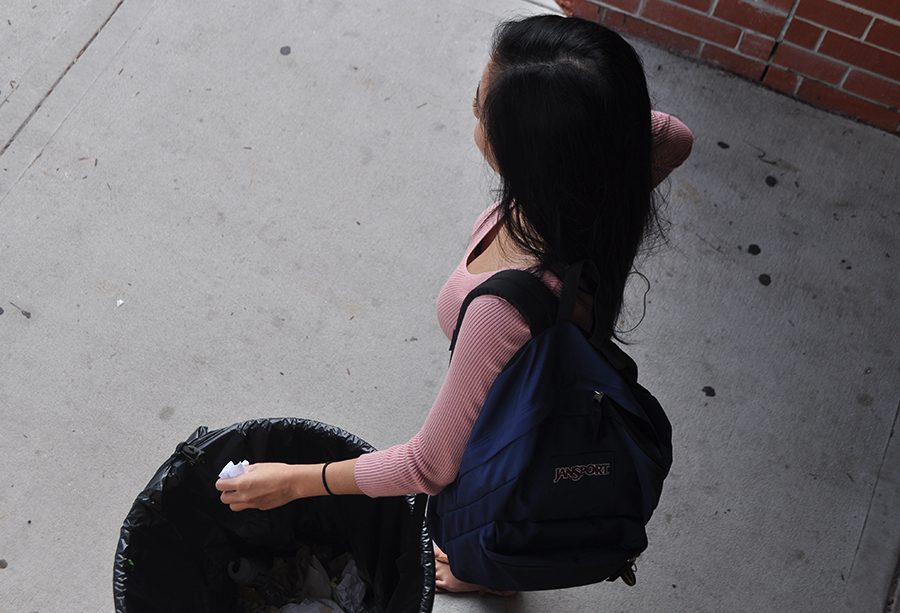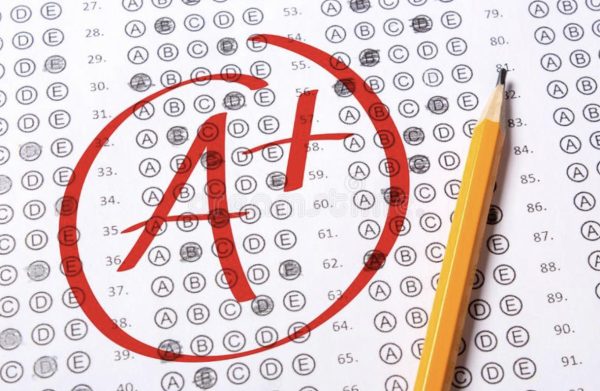LITTERING AND VANDALISM CONTINUE TO OCCUR
Trash cans are located in close proximity to each other, yet students continue to litter.
October 14, 2016
Littering and vandalism are two substantial issues that have persisted through the years at SHS. Littering has been a continuing problem in many places because it causes potential environmental complications, such as killing plants and attracting harmful bacteria to an area, while being costly to clean up. Vandalism makes the campus seem unappealing by the damaging effects it produces.
Garbage that is improperly discarded on the ground can lead to future drawbacks. When students litter, the trash may flow into a drain that leads to Lake Monroe, one of the rivers that is connected to the St. Johns River. Some of the garbage can make it to as far as the ocean, though it may take a number of years.
Before students litter, they should think about the repercussions their trash can cause to the environment.
“Everything eventually drains to the ocean,” said Kristian Cole, the AP Environmental Science teacher. “If you actually understand that everything is connected, you begin to realize that some of the things we do, we probably shouldn’t do.”
Another consequence of littering is the contamination of drinking water. Trash can go into the dirt and pollute underground water systems, affecting the water the community uses on a daily basis.
Earlier in the year, a water main break kept students from using and drinking water from the school because of contaminants such as dirt. If trash keeps regularly being left on the ground and this water problem reoccurs, the litter might flow into the broken water pipe, polluting the water students use.
Students have the tendency to dispose their garbage on campus ground. Despite the number of garbage cans located in close proximity to each other, the problem of littering still proceeds.
“Littering reflects poorly on our students,” said Dr. Connie Collins. “When people litter, it sends a message to other people who are visiting that we don’t care about our campus.”
As far as punishments go, if a student is caught littering by an administrator, they are told to pick it up.
Littering is unfair to administrators, other students, and especially to the custodians who constantly have to collect all the litter.
“Clean up behind yourself.” said custodian Diane Peterson. “Garbage cans are out there for students to put their trash in. Just be kind enough do that.”
Vandalism also continues to persist on campus. Vandalism is the act of destructing public or private property. Graffiti and defacement are two popular examples of vandalism on campus. Students often graffiti inappropriate drawings and words on desks, windows, and walls, generating an unpleasant appearance to buildings and classrooms. There also have been continuous acts of tearing down posters.
Last year during homecoming week, a couple of students trespassed during after school hours and spray-painted several buildings and a tree. This prompted the cancellation of the outside pep rally, provoking students to skip the rest of the day.
A bulletin board of a mural in Renegade Hall that was in the process of being finished was ripped apart, disheartening the teacher and students who were working on it. A trash can near this bulletin board was also knocked down, possibly by the same student(s) who tore off the mural. No student was disciplined for this act of vandalism.
If a student is seen vandalizing, punishments can vary depending on the amount of damage that was produced. There is a monetary responsibility along with a disciplinary penalty such as suspension or being expelled.
Not only does littering and vandalism negatively alter the environment and make surroundings seem unappealing, it also affects the attitude of students who come to be educated.
In order to stop students from littering and vandalizing, students should gather together and educate others about the effects of both issues.
“As a community, we can stand up to these campus bullies,” said sophomore Elizabeth Maalouf. “We should realize it is a grave deal and those who are the campus bullies must also realize their consequences of their actions and treat their Alma mater more respectfully.”



































